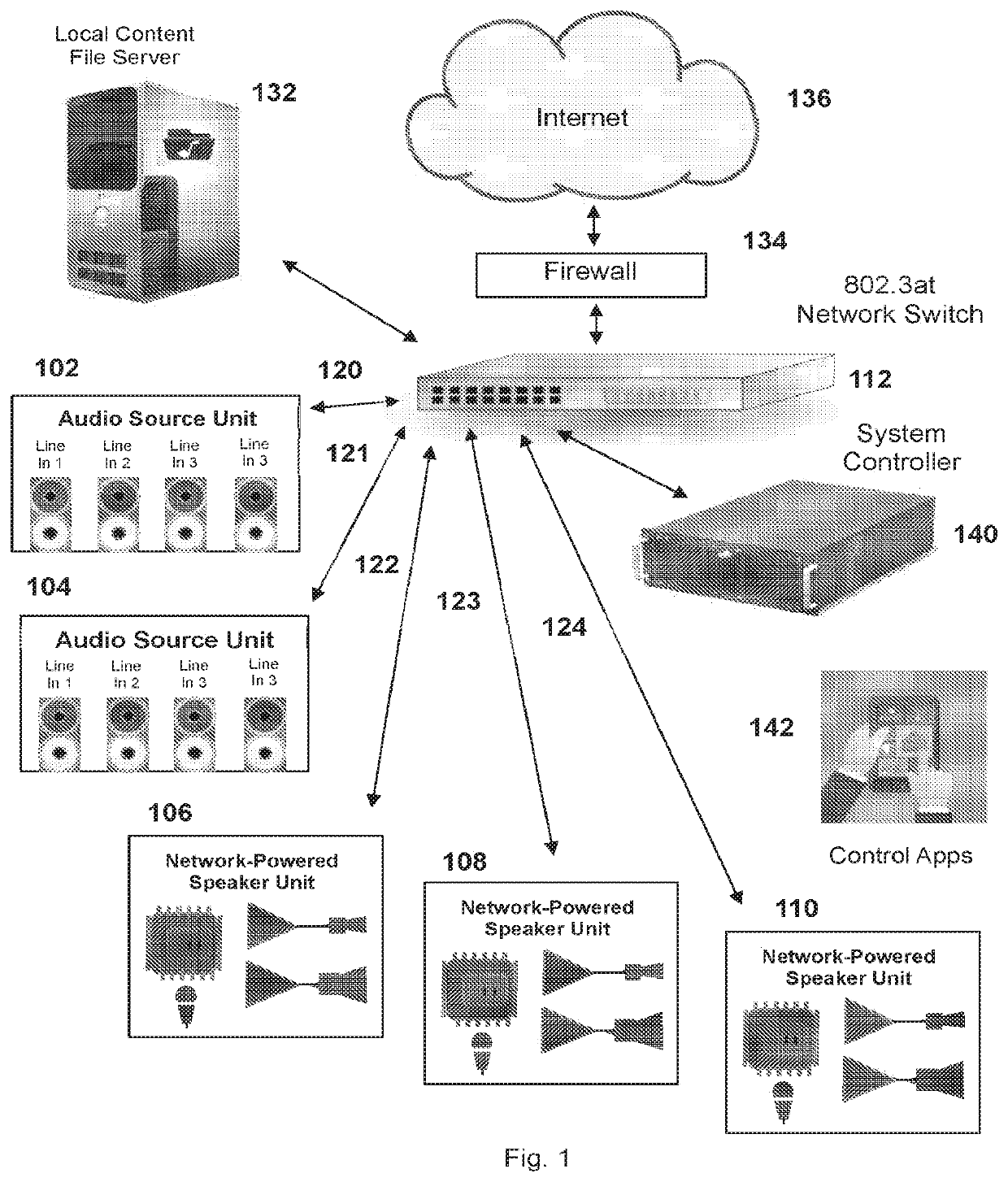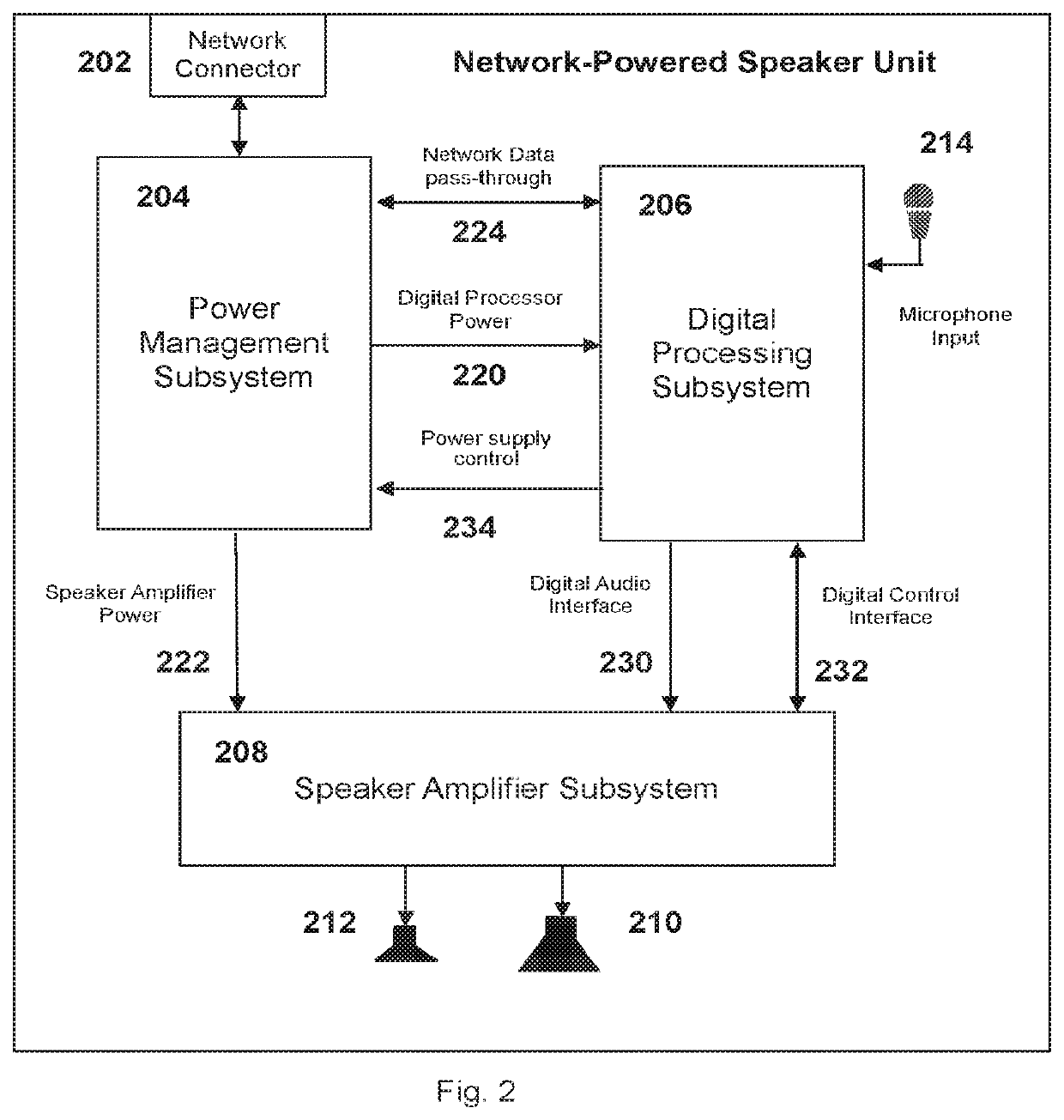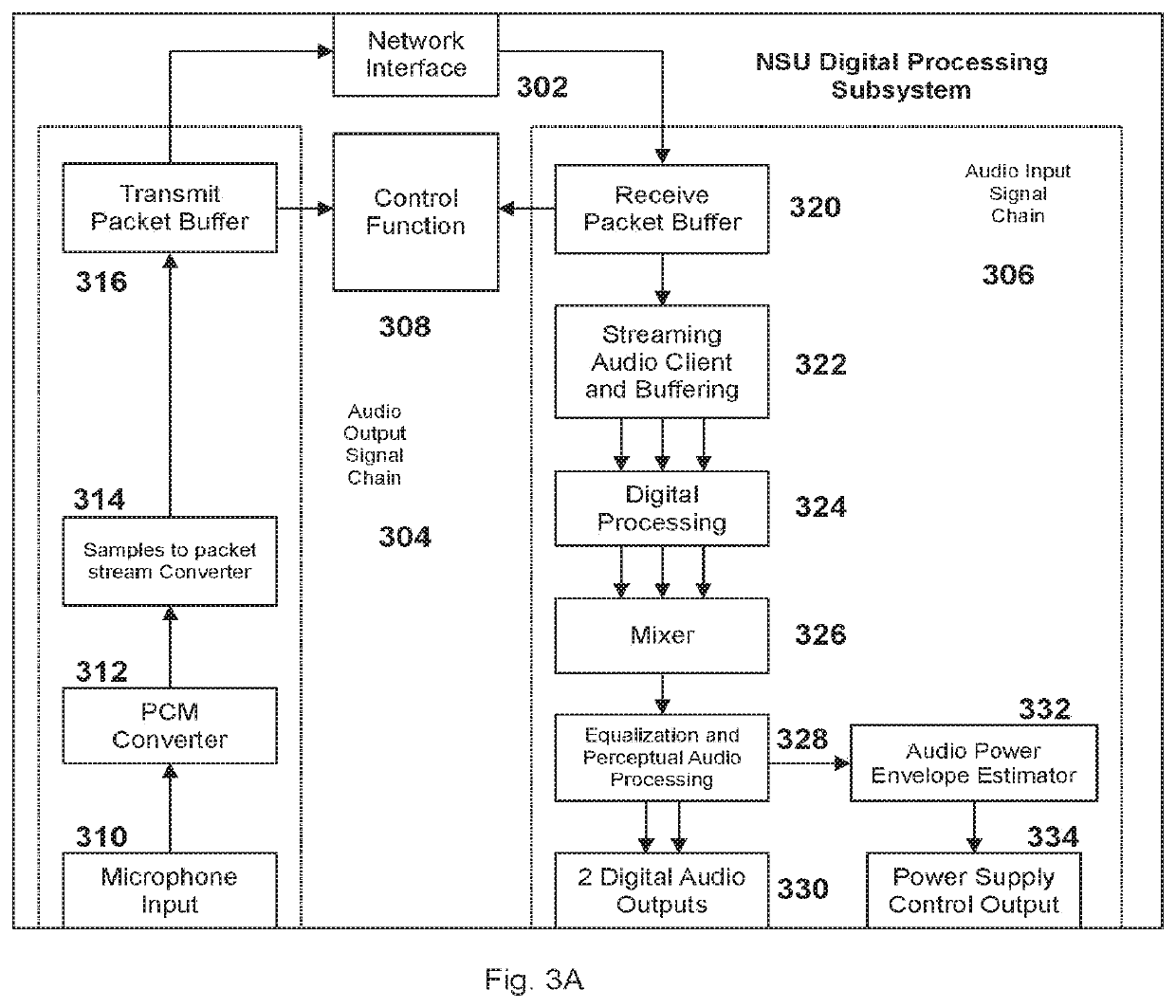Common distribution of audio and power signals
a technology of power signals and audio, applied in the direction of instruments, electric digital data processing, computing, etc., can solve problems such as reducing efficiency
- Summary
- Abstract
- Description
- Claims
- Application Information
AI Technical Summary
Benefits of technology
Problems solved by technology
Method used
Image
Examples
Embodiment Construction
[0027]FIG. 1 illustrates an exemplary audio distribution system. The audio distribution system includes Audio-streaming Source Units (“ASU”) 102 and 104, Network-powered Speaker Units (“NSU”) 106, 108 and 110, a 802.3at compliant network switch 112 and network links 120, 121, 122, 123 and 124. An ASU 102 has access to various sources of audio examples of which are a direct connection to one of the ASU input jacks 130, audio files stored on other network nodes such as file server 132 and Internet radio services accessible through a firewall 134 connected to the Public Internet 136. Computing devices attached to the same network such as system controller 140 or a conventional desktop computer, laptop computer or tablet, can direct ASU 102, for example, to create a network audio stream from one of the audio sources that ASU 102 has access to. The audio stream can be configured to have a unicast network destination address, that is a network address corresponding to the network address ...
PUM
 Login to View More
Login to View More Abstract
Description
Claims
Application Information
 Login to View More
Login to View More - R&D
- Intellectual Property
- Life Sciences
- Materials
- Tech Scout
- Unparalleled Data Quality
- Higher Quality Content
- 60% Fewer Hallucinations
Browse by: Latest US Patents, China's latest patents, Technical Efficacy Thesaurus, Application Domain, Technology Topic, Popular Technical Reports.
© 2025 PatSnap. All rights reserved.Legal|Privacy policy|Modern Slavery Act Transparency Statement|Sitemap|About US| Contact US: help@patsnap.com



